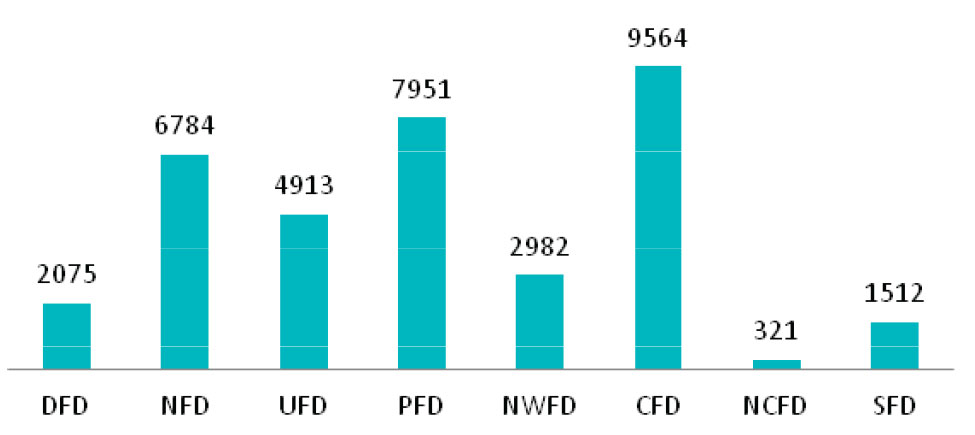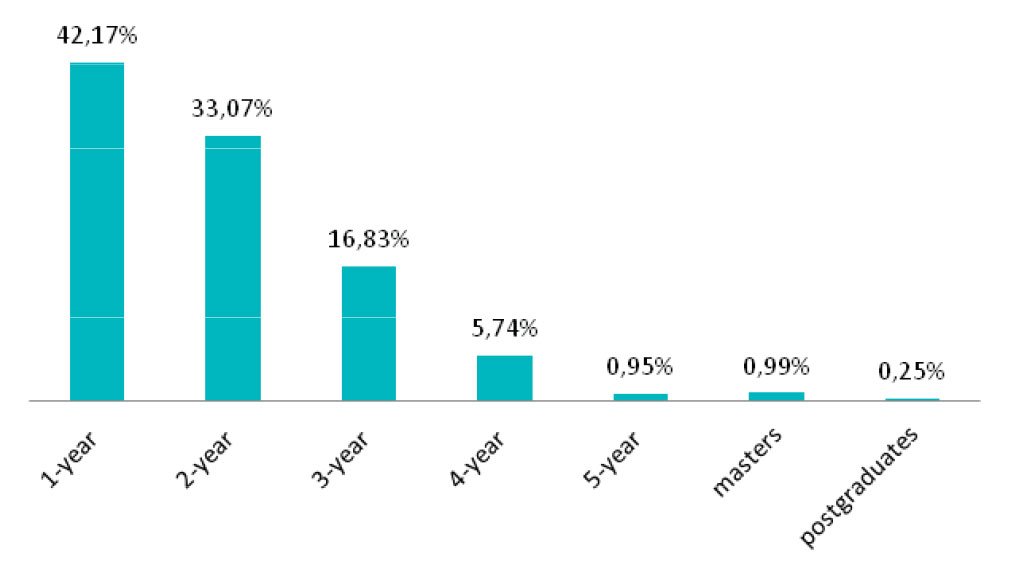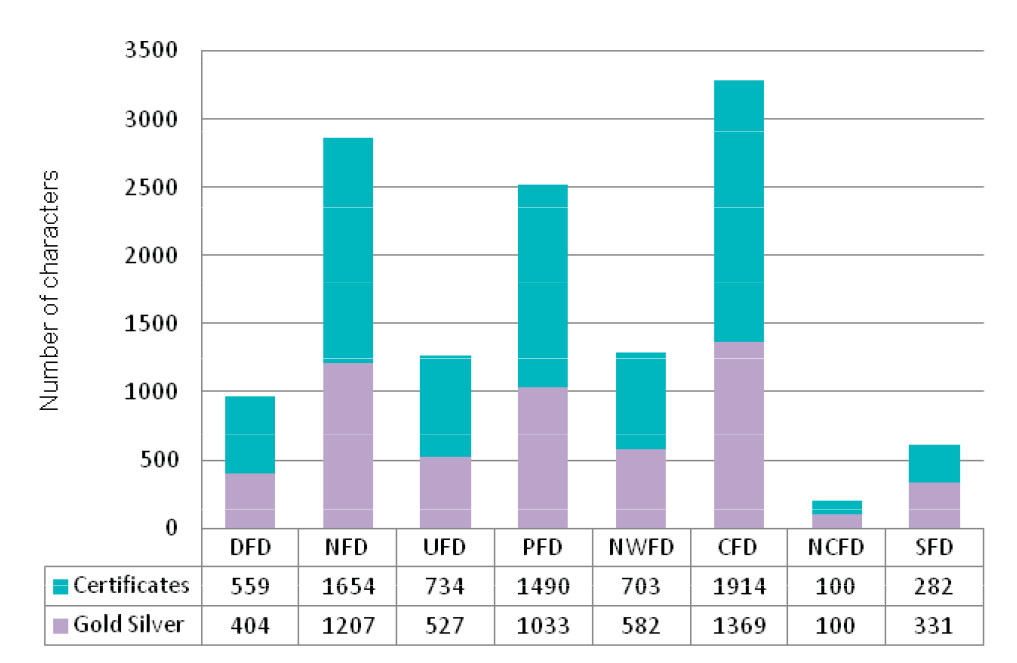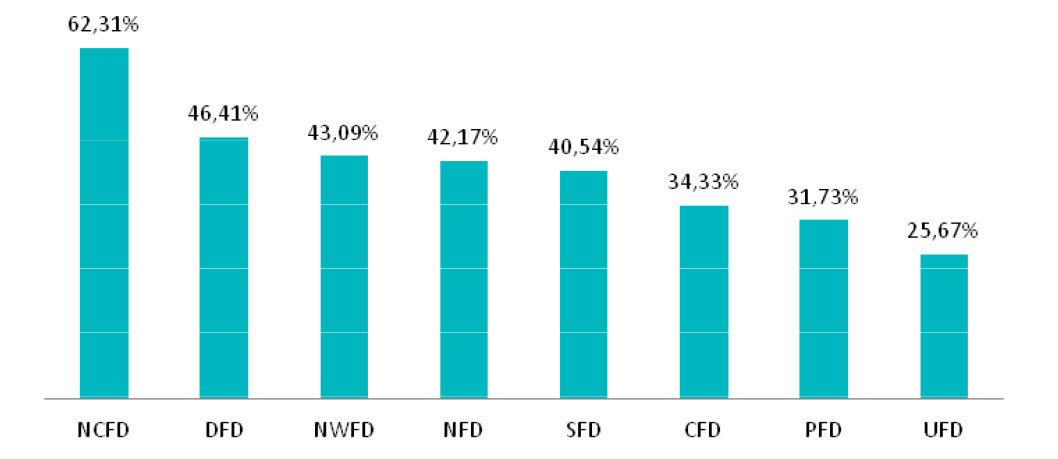"From Physical Education credit to GTO badge" project: students' mobilizing model and progress analysis
ˑ:
Postgraduate student I.D. Kharisov1
PhD, Associate Professor I.N. Nikulin2
PhD, Associate Professor A.V. Voronkov2
PhD V.A. Malakhov2
1South Ural State National Research University, Chelyabinsk
2Belgorod State National Research University, Belgorod
Keywords: Russian ‘Ready for Labor and Defense’ GTO Complex, tests, Association of Student Sports Clubs of Russia, physical education, physical fitness, healthy lifestyle.
Background. The Russian ‘Ready for Labor and Defense’ GTO Complex reinstatement project has evolved into one of the key drivers for the national healthy lifestyle cultivation initiatives and popular physical progress movements and projects [3].
Presently the national physical education community explores the ways to popularize the GTO Complex and associating projects including the relevant competitive events [1, 2]. One of such initiatives is the “From Physical Education Credit to GTO Badge” Project that is the national physical education tournament for the 17-28 year old students in the GTO-test-compliant events with the difficulty levels matching the GTO Gold and Silver Badge standards.
The “From Physical Education Credit to GTO Badge” Project was launched in the academic year 2018-19 to offer the university-level, regional and federal events. The university events were organized by the Association of Student Sports Clubs supported by the university management and designed to: encourage the students’ competitions with qualifications for the GTO-compatible tests; select the best prospects for the university teams for the higher-level Association of Student Sports Clubs Project competitions; and encourage and decorate the leading academic communities (institutes, divisions, schools, hostels, academic groups etc.) for accomplishments in the Project.
Objective of the study was to analyze progress of the students’ mobilizing for the lower (university) level national “From Physical Education Credits to GTO Badge” Project events and their fitness for the regional events.
Methods and structure of the study. We sampled for the first season of the Project 36,102 students (52% male and 48% female sample) from 226 national universities in 65 regions of the Russian Federation. Physical fitness of the sample was rated by a simplified version of the “From Physical Education Credits to GTO Badge” Project geared to encourage broad committment of the student communities for the competitive events wherever the elementary academic physical education and sportassets and infrastructure is available. The simple test set was designed to rate the core physical fitness qualities namely speed, coordination, strength and flexibility. Competitors were required to succeed in at least five of the standard tests to qualify for the Association of Student Sports Clubs Gold or Silver Class certificate.
The only difference of the Project tests from the standard age-specific GTO Complex tests is that the Project tests are simpler and, e.g., exclude the most challenging 2/3km race test; albeit the physical fitness tests are complemented by the physical development and theoretical knowledge tests. Successes in these three test components were acknowledged by formal “I am in sports” Association of Student Sports Clubs Class I/ II certificates depending on the total points scored in the tests. One more difference of the Association of Student Sports Clubs -sponsored Project tests is that there is no need to mobilize special referees from the GTO Complex test centers since the physical fitness tests may be run by the academic physical education specialists or student volunteer activists. The simplification makes it possible to expand the range of test formats to include leisure-time group tests, team competitions in the Physical Education tests, mass tests in the Physical Education classes and some other test models.
The “From Physical Education Credit to GTO Badge” Project was organized by the Association of Student Sports Clubs of Russia and the Sports and Social Projects Directorate in charge of the national GTO Complex Project in partnership with the Ministry of Sports, Ministry of Science and Higher Education, and the Russian Union of Rectors.
Results and discussion. Given on Figures 1 and 2 hereunder are the student competitors in the Project classified by the federal regions and age groups. Dominating in the university-level Project events were the CFD competitors (n= 9564). Leading among the universities were Belgorod State National Research University and Tyumen Industrial University (n=1567 each) followed by Ural State University of Economics (n=1268). Kazan National Research Technical University named after A.N.Tupolev came up with more than 1000 competitors. It should be mentioned that the Project competitors were dominated (42,17%) by the 1-year students: see Figure 2.

Figure 1. Project competitors classified by the federal regions, people

Figure 2. Project competitors classified by the age groups, %
Based on the Project tests, 5236 (14.5%) and 7166 (19.85%) of the sample successfully qualified for the Association of Student Sports Clubs Gold and Silver Class certificates, respectively, and 23,700 (65.65%) failed in the tests. Most successful in the Association of Student Sports Clubs tests were the Central Federal District students (Figure 3), although the North Caucasus Federal District leaded in the numbers of certificates won (Figure 4).

Figure 3. Association of Student Sports Clubs Gold and Silver Class certificates classified by the federal districts,

Figure 4. Breakdown of the successful competitors in the ‘From Physical Education Credit to GTO Badge’ events by the federal districts, %
Conclusion. 36 102 students from 226 Russian universities have joined the national ‘From Physical Education Credit to GTO Badge’ Project competitions for the study period, and 34.35% of them succeeded in the tests to qualify for the Association of Student Sports Clubs Gold and Silver Class certificates. Leading in on the team scoreboard was the CFD team, whilst the Belgorod State National Research University and Tyumen Industrial University leaded in the numbers of competitors
.References
- Voronkov A.V., Nikulin I.N., Kolesnikov A.A., Nikulina D.E. Academic physical fitness rating by GTO complex tests. Teoriya i praktika fiz. kultury. 2019. no. 5. pp. 37-38.
- Nikulin I.N., Voronkov A.V., Posokhov A.V., Revina Yu.A. Monitoring of physical fitness level of university students during GTO tests. Kultura fizicheskaya i zdorovye. 2016. no.5 (60).pp. 88-90.
- Voronkov A.V., Nikulin I.N., Irkhin V.N. et al. Training for GTO testing in educational organizations. Study guide. Belgorod: BelSU publ., 2016. 124 p.
Corresponding author: ki_sport@mail.ru
Abstract
Objective of the present study was to analyze the involvement of students in the social project "From Student Credit to GTO Badge" and assess their fitness level.
Methodology and organization of research. 36 102 students (52% boys, 48% girls) from 226 universities of Russia from 65 subjects of the Russian Federation took part in the project.
To assess the level of physical fitness, the authors used an easier form of the physical fitness testing “From Student Credit to GTO Badge”, focused on the wide coverage of students and the state of the sports infrastructure of Russian universities.
The article contains an analysis of the All-Russian Sports Competition "From Student Credit to GTO Badge", which provides for training of 17-28 year-old students in order for them to pass the standard tests of two difficulty levels: to qualify for the Gold and Silver Badges of the All-Russian Physical Culture and Sports Complex "Ready for Labor and Defense". To get a Student Credit, it is necessary to pass at least five tests for the relevant qualifying standard that help evaluate the level of development of speed, coordination, strength abilities, and flexibility. A distinctive feature of the Project is its simplified format as compared to the All-Russian Physical Culture and Sports Complex. In the first season, the Project involved a total of 36,102 students from 226 universities and 65 territorial entities of the Russian Federation. It was found that 14.5% of students were able to qualify for the GTO Gold Badge and 19.85% - for the GTO Silver Badge. The Central Federal District was the first in the number of successful qualifiers for the Badges, the North Caucasian Federal District – in the percentage of badge holders from the total number of participants. Belgorod State National Research University and Tyumen State Oil and Gas University took the lead in the number of participants.

